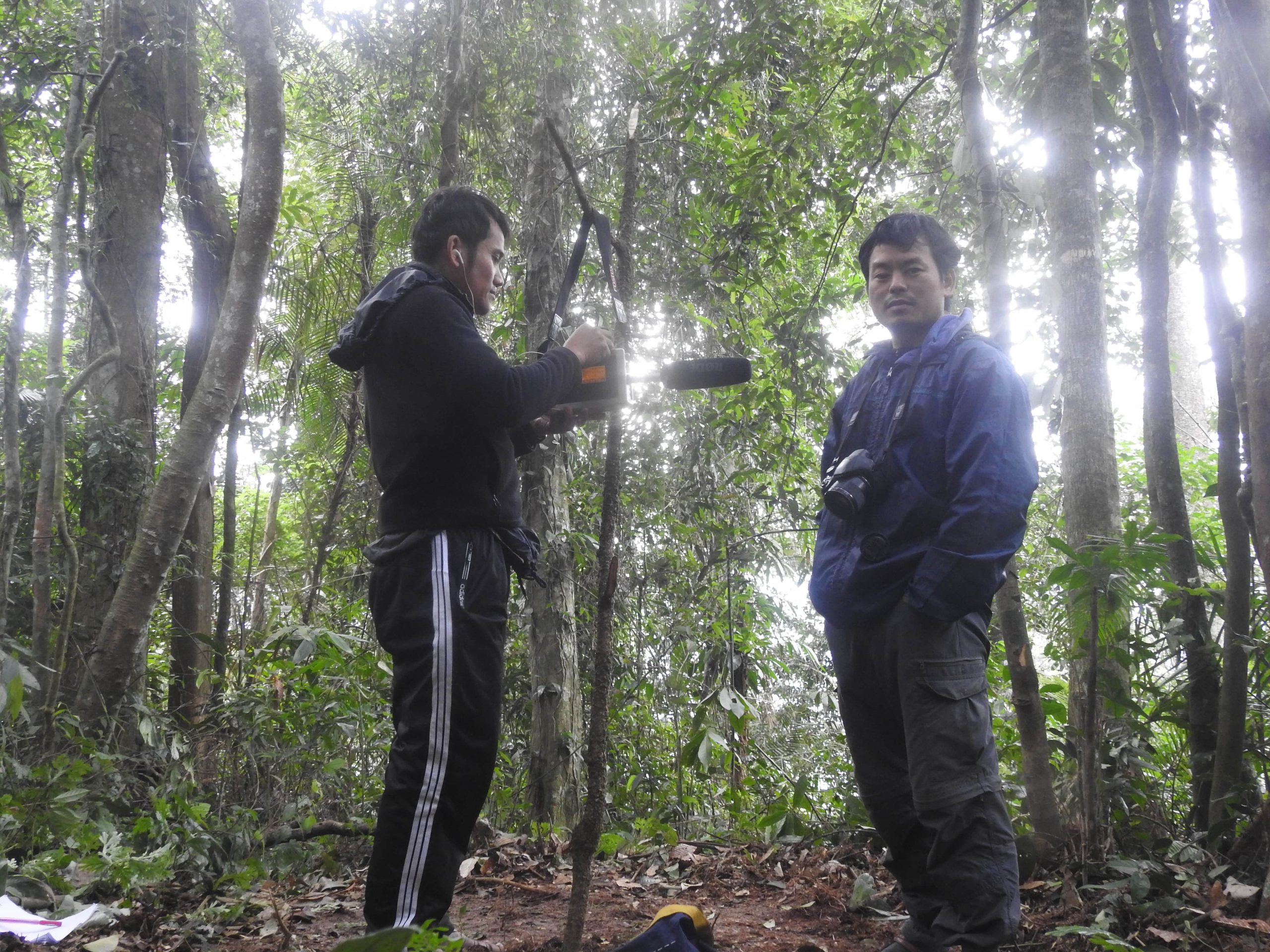
Welcoming this new year 2021.
January 1, 2021
Association Anoulak ANNUAL REPORT 2020!
January 13, 2021
Gibbons are some of the most threatened primate families in the world. The twenty species of Gibbons (all of them occurring only in Southeast Asia) are on the brink of extinction: they are all classified as Globally Threatened (Critically Endangered [5]; Endangered [14] or Vulnerable [1]) by the IUCN Red List on Threatened Species (IUCN, 2020). Given their dire conservation status, it is crucial to take appropriate actions to protect all species, notably with site prioritization. However, there are still large gaps in our knowledge regarding the distribution of Gibbon species across their range. To better plan conservation actions for Gibbons, it is important to know their distribution across their range.

White-cheeked gibbon photographed by Association Anoulak’s canopy camera-traps
Gibbons of the genus Nomascus (seven species) are the most threatened of the four Hylobatidae genera. Nomascus species are restricted to the east of the Mekong River in Cambodia, Lao PDR, Viet Nam and southern China. Notably, the current taxonomic status and distribution range limit of the two white-cheeked gibbon species (Critically Endangered Northern White-cheeked Gibbon Nomascus leucogenys and Critically Endangered Southern White-cheeked Gibbon N. siki) remain uncertain across their range. Both species are endemic to Lao PDR and Viet Nam (N. leucogenys is already ecologically extinct from China).
Nakai-Nam Theun National Park is a strong hold of White-cheeked Gibbon populations. It is currently speculated that the Nam Kading/Nam Theun (river) represents the major geographical barrier between the two White-cheeked Gibbon species, which would suggest that both the Northern and the Southern White-cheeked Gibbon occur in Nakai – Nam Theun National Park (Van Ngoc Thinh et al., 2010). But this has never been confirmed in Nakai – Nam Theun National Park in particular.

White-cheeked gibbon family group photographed by Association Anoulak’s canopy camera-traps
White-cheeked Gibbons live in territorial monogamous family groups composed typically of 3-5 individuals including the female (with a yellow fur at sexual maturity), the male (with a black fur at sexual maturity) and their offspring. To re-enforce the bond of the family and inform neighboring gibbon groups of their territory, Gibbons produce morning duet songs that can be heard from up to 2-kilometre away. In addition to be graceful and mesmerizing, Gibbon calls are very informative! Indeed, Gibbon calls are species-specific, meaning that each of the twenty species of Gibbons can be identified from its specific call pattern (Van Ngoc Thinh et al., 2011), often requiring adapted computer software to distinguish close-related species such as the two White-cheeked Gibbon species.
In the past few years, Association Anoulak has been recording gibbon calls in several sites across Nakai – Nam Theun National Park with adequate recording equipment to investigate the taxonomic status and distribution of White-cheeked Gibbons in the National Park. We are implementing this project in collaboration with Dr. Hradec from the University of Life Science, Czech Republic, who is providing technical assistance for statistical analysis of calls. The results of this research will be published in peer-reviewed scientific journals once we will have gathered enough data in the field these coming months. Results will have considerable implications for Gibbon conservation planning.

Locations of gibbon call recordings since the beginning of the project

Field officers Mr. Done and Mr. Chaolor) recording gibbon calls in the field

Recording gibbon calls in the field

Recording gibbon calls in the field

Collecting gibbon data in the field

Team going in the field to record gibbon calls

Landscape from which gibbon calls can be heard in the morning, from up to 2-km away
You can watch and listen a gibbon duet call recorded in Nakai – Nam Theun by our team:
